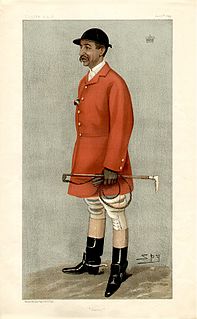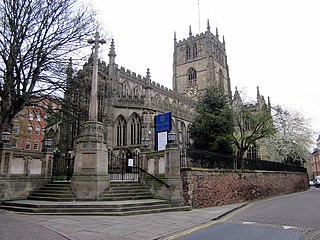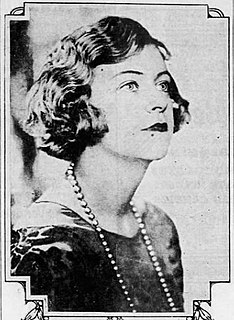Related Research Articles

Viscount Galway is a title that has been created once in the Peerage of England and thrice in the Peerage of Ireland. The first creation came in the Peerage of England in 1628 in favour of Richard Burke, 4th Earl of Clanricarde. He was made Earl of St Albans at the same time. The second creation came in the Peerage of Ireland in 1687 in favour of Ulick Bourke. He was made Baron Tyaquin at the same time, also in the Peerage of Ireland. However, both titles became extinct on his early death in 1691. The third creation came in the Peerage of Ireland in 1692 in favour of the French soldier and diplomat Henry de Massue, Marquis de Ruvigny, who was created Baron Portarlington, also in the Peerage of Ireland, at the same time. He was made Earl of Galway in 1697. However, both titles became extinct on his death in 1720.

George Vere Arundel Monckton-Arundell, 8th Viscount Galway, was a British politician. He served as the fifth Governor-General of New Zealand from 1935 to 1941.

John Manners, 2nd Duke of Rutland KG, styled Lord Roos from 1679 to 1703 and Marquess of Granby from 1703 to 1711, was a British Whig politician sat in the English and British House of Commons from 1701 until 1711, when he succeeded to the peerage as Duke of Rutland.
Sir Thomas Prendergast, 2nd Baronet was an Irish politician. His career was helped by influential family connections, but apparently hampered by his own lack of ability. To Jonathan Swift, who detested him, he was "Noisy Tom", while the King called him "that Irish blockhead".

Bernard Edward Barnaby FitzPatrick, 2nd Baron Castletown, KP, CMG, PC (I) was an Anglo-Irish soldier and Conservative Member of Parliament.
George Edward Arundell Monckton-Arundell, 6th Viscount Galway, was an Anglo-Irish Conservative politician.

George Edmund Milnes Monckton-Arundell, 7th Viscount Galway, CB was a British Conservative politician and courtier.
The High Sheriff of Fermanagh is the Sovereign's judicial representative in County Fermanagh. Initially an office for lifetime, assigned by the Sovereign, the High Sheriff became annually appointed from the Provisions of Oxford in 1258. Besides his judicial importance, he has ceremonial and administrative functions and executes High Court Writs.

Hale Park is a country house and landscape park in the village of Hale, Hampshire. It was designed and built by Thomas Archer around 1715.
The High Sheriff of Queen's County was the British Crown's judicial representative in Queen's County, Ireland, Ireland from the 16th century until 1922, when the office was abolished in the new Free State and replaced by the office of Offaly County Sheriff. The sheriff had judicial, electoral, ceremonial and administrative functions and executed High Court Writs. In 1908, an Order in Council made the Lord-Lieutenant the Sovereign's prime representative in a county and reduced the High Sheriff's precedence. However the sheriff retained his responsibilities for the preservation of law and order in the county. The usual procedure for appointing the sheriff from 1660 onwards was that three persons were nominated at the beginning of each year from the county and the Lord Lieutenant then appointed his choice as High Sheriff for the remainder of the year. Often the other nominees were appointed as under-sheriffs. Sometimes a sheriff did not fulfil his entire term through death or other event and another sheriff was then appointed for the remainder of the year. The dates given hereunder are the dates of appointment. All addresses are in Queen's County unless stated otherwise.
The High Sheriff of Limerick was the British Crown's judicial representative in County Limerick, Ireland from the 13th century until 1922, when the office was abolished in the new Free State and replaced by the office of Limerick County Sheriff. The sheriff had judicial, electoral, ceremonial and administrative functions and executed High Court Writs. In 1908, an Order in Council made the Lord-Lieutenant the Sovereign's prime representative in a county and reduced the High Sheriff's precedence. However the sheriff retained his responsibilities for the preservation of law and order in the county. The usual procedure for appointing the sheriff from 1660 onwards was that three persons were nominated at the beginning of each year from the county and the Lord Lieutenant then appointed his choice as High Sheriff for the remainder of the year. Often the other nominees were appointed as under-sheriffs. Sometimes a sheriff did not fulfil his entire term through death or other event and another sheriff was then appointed for the remainder of the year. The dates given hereunder are the dates of appointment. All addresses are in County Limerick unless stated otherwise.
Henry Monckton was the fourth son of John Monckton, 1st Viscount Galway, and the younger half-brother of the more famous Robert Monckton.
John Monckton of Serlby, Nottinghamshire, was a British landowner and Whig politician who sat in the House of Commons between 1727 and 1751. He was elevated to the Irish peerage as the first Viscount Galway in 1727.

The County War Memorial, Nottingham is a Grade II listed structure in Nottingham.
Edward Hughes was a British artist who specialised in portrait painting.

Elvira EnidBarney was an English socialite and actress known professionally as Dolores Ashley. She was tried for the murder of her lover, Michael Scott Stephen, in 1932. The trial was widely reported by the British press. She was later found not guilty, but died four years later in a Paris hotel room.
Hugh Armigel Wade was an English songwriter and musician.

Kenneth Hare Bicker-Caarten was an English actor who worked under the name Kenneth Carten.

Vere Monckton-Arundell, Viscountess Galway was a British poet, writer, philanthropist, and woman of letters. In 1910, she co-founded an auxiliary hospital at her home, Serlby Hall, with her husband. She was invested as a Lady of Justice of The Most Venerable Order of the Hospital of St. John of Jerusalem.
References
- ↑ Massue, Melville Henry marquis de Ruvigny et Raineval (1994). The Plantagenet Roll of the Blood Royal: Being a Complete Table of All the Descendants Now Living of Edward III, King of England. The Isabel of Essex volume. Genealogical Publishing Company, Incorporated. p. 199. ISBN 9780806314341 . Retrieved 21 January 2018.
- ↑ Mosley, Charles, editor. Burke's Peerage, Baronetage & Knightage, 107th edition, 3 volumes. Wilmington, Delaware, U.S.A.: Burke's Peerage (Genealogical Books) Ltd, 2003
- ↑ Old Public School Boy's Who's who. St. James Press. 1933. p. 725. Retrieved 21 January 2018.
- ↑ Meehan, Patrick F. (1983). The Members of Parliament for Laois and Offaly: (Queen's and King's Counties), 1801-1918. Leinster Express. p. 109. ISBN 9780863350009 . Retrieved 21 January 2018.
- ↑ Rose, Andrew (2007). Lethal witness: Sir Bernard Spilsbury honorary Pathologist. Sutton. p. 222. ISBN 9780750944229 . Retrieved 21 January 2018.
- ↑ The Java Gazette: ... A Monthly Magazine Devoted to Travel and Trade, Volumes 3-4. British Chamber of Commerce for the Netherlands East Indies. 1934. p. 195.
- ↑ "Skeffington-Smyth, Terence George Randal". The National Archives, Kew. Retrieved 21 January 2018.
- ↑ "Correspondence from family members including letters from George Vere Monckton-Arundell to his father (Ga C 21/174-21/178); letters from his grandsons, Denys Skeffington Smyth (Ga C 21/179-21/181); Noel Skeffington Smyth (Ga C 21/182-21/183) and a postcard, examples of school work and a poem from Terence Skeffington Smyth (Ga C 21/184-21/186); also includes a notice for the sale by auction of land in South Hiendley, Yorkshire, 2 December 1920 (Ga C 21/188)". The National Archives. Retrieved 21 January 2018.